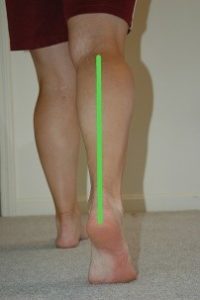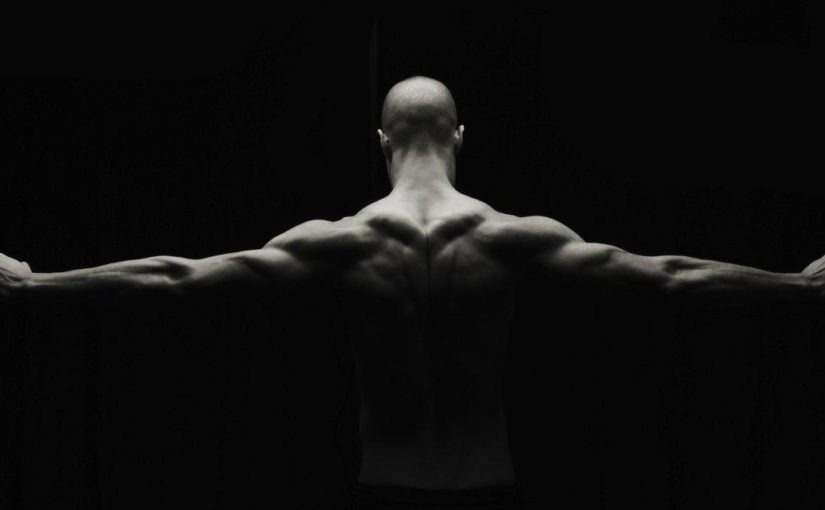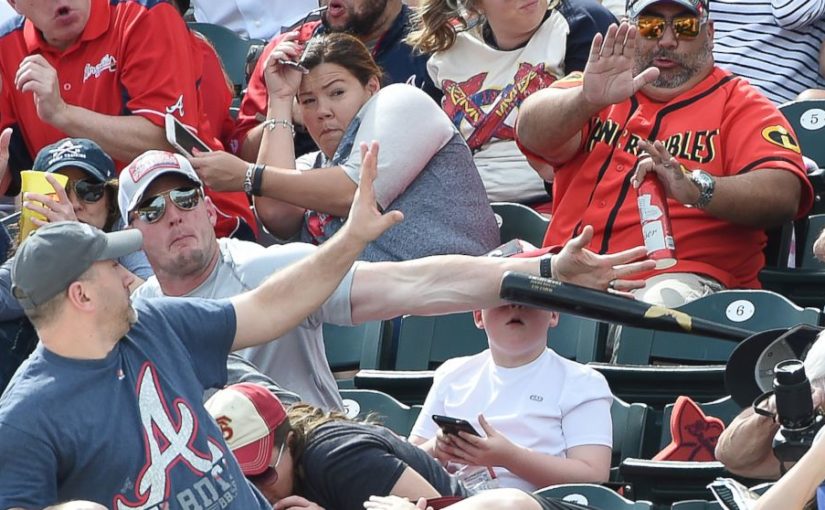LINEAR MOTION AND THE SPRINTER THEORY
I have surmised that there are 5 different ways to create mass motion in order to create force/momentum;
1. Shifting weight to the desired direction where we want to deliver force.
2. Taking a step that moves our mass to the desired direction where we want to deliver force.
3. Moving our mass with a linear jump to the desired direction where we want to deliver force.
4. Rotational movement of the body. (this will be explained later).
5. Combination of these.
The sprinter theory is involved when we are producing linear forward / upwards motion. Start by thinking about the way we walk, run or jump forward. Think about the way sprinter aligns himself before explosive start or think about American football player ready to tackle and takedown his opponent. By looking our normal way of moving; walking, running and jumping reveals a lot about the economic way for creating forward motion. If we look sprinters or long jumpers accelerate their body mass to maximum speed, one could say that it reveals the way to accelerate your body mass most effectively. All movements like running, sprinting, tackling and so on, produce the kind of momentum we want to create in self-defense also. There is acceleration and velocity of mass, which give us the force and momentum.
Acceleration and velocity are most effectively developed in linear forward motion. It can be directed in straight line movements like sprinting or straight punch. Upwards movements like long jump or stepping-in uppercut. How are legs and body positioned for optimal motion development? In my opinion body alignment for the optimal motion is crucial;
1. The skeletal structure of our legs and upper body should be aligned towards desired direction of the motion. This means that head, shoulders, hips and knees are aligned. If it would be more efficient to align skeletal and muscle structure for example sideways, we would see Usain Bolt doing sideways explosive starts in the Olympics.
2. Feet-knee-hip alignment is crucial for the engine to be able to work in its maximum capacity. Muscles and joints and ligaments of the legs produce the motion. Joint alignment should support the mass we are trying to accelerate and the direction the mass is accelerated to. 
3. Joints and muscles have certain angles which enable optimal muscle force production. Think about sprinting again. Would you be able to do explosive start from squat position? Or could you do it if your knee joints where locked to extension? From those positions your start would probably not be the best possible. Optimal angle for a muscle to produce force in its range of motion is in middle of that range.
In example when moving forearm in its full range from extension to flexion, its range of motion is about 145 degrees. This doesn’t put the middle of the range in 90 degrees as taught in many systems, but instead the optimal angle is less than 90 degrees. This same principle applies to knee joint also. So when we want that explosive acceleration the angles must be less than 90 degrees and most certainly the joint can’t be locked, like taught in many traditional systems.
This alignment of the legs and body and optimal joint/muscle angles enable the explosive acceleration and creation of force/momentum we need to be able to produce and deliver to our opponent. We can develop acceleration and velocity to other directions too, like sideways and backwards, but not as effectively. This doesn´t mean that those motions should not be practiced.
But there is more to take into the account when we are talking about self-defense. This sprinter theory only describes the optimal way to produce acceleration. If you want to examine the chain further up, and think about how the force continues towards you opponent you need to take into the account things like, maintaining balanced position, spinal alignment and angle, shoulder-elbow alignment, motion-contact timing, short/long impulse and so on.
I was already talking about linear forward / upwards motion, but let´s look upwards motion more closely. Let’s examine the way to produce upwards force from standing still position, which in self-defense can be used in lifting, takedowns and throws but also in striking techniques and pushing movements. The movement can be just weight moving upwards without losing the contact on the ground or a take-off, it can involve also rotational motion.
Think about weightlifter doing a squat, or yourself picking up something heavy from the ground, or just making a jump straight up in the air, any type of movement that involves creating force upwards straight against gravity. You can find that once more that, if you want to be able put into use all of that muscle force you have and produce explosive movement those alignments need to be in order.
Joints in your legs need to be aligned properly with your upper body. Balanced position ensures that you center of mass is located between points of balance and so on mass is aligned with feet-knee-hip line. Muscle/joint angle works the same way as in forward linear motion, middle of the range of movement. So again there is the same principle involved, how you align your whole body to get the maximum force out from your system and keep that alignment so that you can deliver that force and momentum to your target.
Motion downwards introduces a new physical concept into the picture; potential energy. In physics, potential energy is energy possessed by a body by virtue of its position relative to others. So basically if we lying on the ground, on our backs, we don’t have potential energy stored to our body. When we stand we have the potential to use gravity and drop our weight down. So because position of our body relative to ground we can use potential energy to produce
force/momentum.
Every time we have the possibility to use gravity as “an assistance” we can also utilize potential energy. If we raise our body upwards, or have the possibility to drop ourselves to the opponent the force will be greater.
Some arts, like ITF Taekwondo uses this in a principle called Sin-Wawe movement. It basically teaches you to raise your body straight upwards as much as you can and when you start to deliver the punch at the same time you go forward and downwards. I’m not sure about the effectiveness of this particular motion, but the principle is sound. If you can, always create motion of your body mass to the direction where you are executing your movement, be it linearly forward, upwards or downwards.
ROTATIONAL MOTION
Rotational motion occurs around axis, that can be internal, like body parts rotating around a joint(s) or rotational motion of whole body, when spine acts as an axis. In here I’m taking a look into the concept of rotational motion in whole.
There are few physics terms that need to be explained. When taking about rotational motion we are talking about moment of force and rotational momentum to differentiate them from linear force and momentum. Same difference is with terms of speed; angular acceleration and angular velocity.
Rotational motion is used in several types of movements in martial arts. Most commonly rotational motion can be observed together with linear motion. This combination was called general motion; in forward linear motion body is also rotated strongly to cover more distance and produce that extra moment of force. The motion of body mass, shifting of weight or stepping in can be combined to rotational movement in all directions; forward, sideways or backwards, also to up/downwards. Only types of movements where rotational motion is not utilized are simultaneous movements with both hands in the same direction. Example when you are reaching forward with both hands.
To understand the production of moment of force and angular momentum you need to understand the relationship between axis and lever. Make a short test; stand straight, with hands relaxed at your sides. Now imagine that there is an axis running through the top of your head straight down to the ground. Now when you rotate your body around that imaginary axis the lever is the length of your clavicle to you shoulder. If you raise your elbow to the side, the levers length increases. If you straighten your whole arm, you have the maximum length of the lever you are able to use with your hands if there is no impact weapon included.
The moment of force is a simple concept; the lever arm travels certain distance depending how much you rotate your axis. If you rotate your body so that your hand moves from side to front, that’s 90 degrees, it is called rotational displacement of π2 rad. Distance the lever travels is shorter towards the point of axis and longer towards the end of the lever. Since it takes the same amount of time to the lever (arm) to travel different distances along the lever arm, this means that there has to be a difference in velocity. In the end of the lever the angular velocity is the greatest, so the conclusion is that because mass x velocity is momentum, the rotational momentum has to be greater in the end of the lever because the velocity is greater. That’s the magic of lever.
You can probably already see the numerous ways this can be used in self-defense and martial arts. To make matter at least little bit more complicated let’s think about how we can still produce great force with shorter lever arm. Think about for example short range body shots. The lever is not so long and still we can produce much moment force. The answer lies in the other variable; mass. When striking with straight arm, the mass of the arm is not that much (mass x velocity). Now when the lever is shorter our it is easier to utilize the weight of the body. Other variable also increases when the lever arm shortens; acceleration. It is easier to accelerate shorter lever than it is to accelerate long lever and as you remember mass x acceleration is force. In the case of rotational motion; mass x angular acceleration is moment of force.
How do we produce explosive rotational motion? Again because we want to get acceleration and develop velocity, we need to be able to utilize proper mechanics into the movement. If you take a look at athletics performances where powerful rotation is used, such as javelin throw or baseball strike, they use wide range of motion to create velocity. That is not a good mechanics for in martial arts. We need to be able to create rotation with shorter range of motion and not load our strikes or kicks. The degree of rotation is between 90 to 140 degrees, put even a shorter rotation does the trick of adding force. Note that I´m excluding the spinning type of movements that can be effectively used in sport martial arts, but are not recommended for self-defense.
Powerful rotation comes from the core muscles and is combined with weight shifting in the direction of target. Explosive hip movement functions as the engine for this motion.
So what can we do with rotational motion:
1. Increase force, by adding moment force in linear movement.
2. Increase reach by rotating body.
3. Produce moment force in ranges where linear movement is not possible.
4. We can also cause motion in our opponent by rotation, same as pushing. Rotation motion is usually combined with pulling, as in Thai clinch work for example.
“STATIC MOTION”
From the point of view of physics if there is no motion, no work is being done. Still in self-defense pinning someone against a wall or ground, is work being done by muscles and bodyweight. I call this static motion. This is very useful form of producing effect in many situations.
Closely related to static motion is another principle that I call the power of locked joint, these two work together very well. If you think back about what I have explained earlier, you can see that muscles, joints and ligaments are the engine that we use to create motion. Let´s take an example; if you lock your knee joint your muscles in your thigh are in full extension. So there is no possibility for you to produce more movement forward or upwards with that leg, until you bend the knee joint and the muscles are in flexion. So the muscles are weak when in full extension and can´t produce motion, but here lies the power of the locked joint. When the joint is locked, it is strong and this can be used in various situation to our advantage. For example, when pinning opponent against stationary object we can lock the knee joint so that it remains strong and does not give in even when there is pressure directed back at us. Same goes when trying to maintain distance between bodies or opponents arm and your body. Even when opponent is significantly stronger, the locked elbow provides a strong mechanism to maintain distance.
SUMMARY
It is easy to see that understanding our basic body motion is crucial in learning martial arts and self-defense. Everything develops around motion. Every technique, no matter what style or system involves motion. How effective motion is produced in those systems or arts varies, but what doesn’t vary are the laws of physics and physiology behind human motion. Like I said there are limited number of ways we can create motion what is limited by how our body is designed and there are limited ways to produce force, because of that design.









